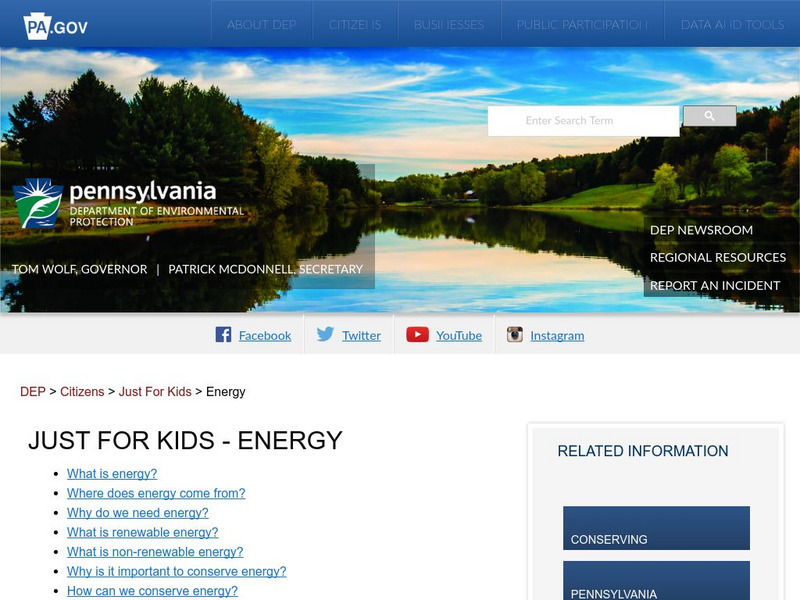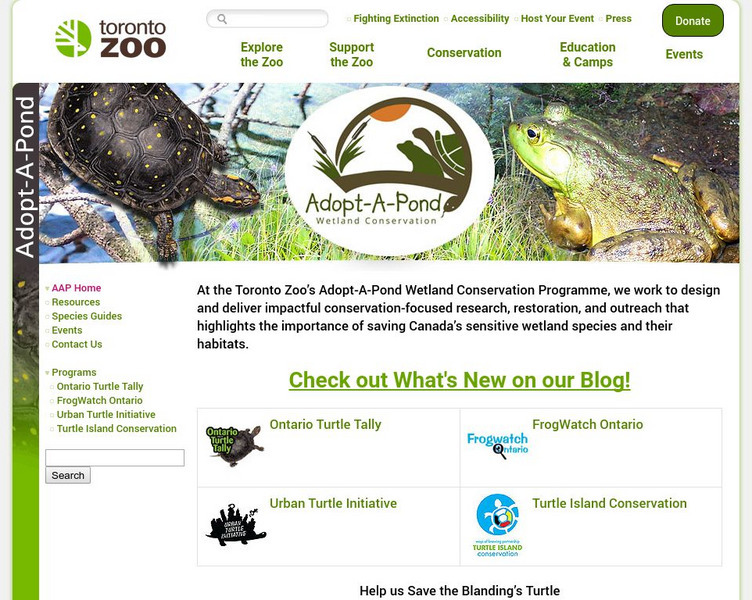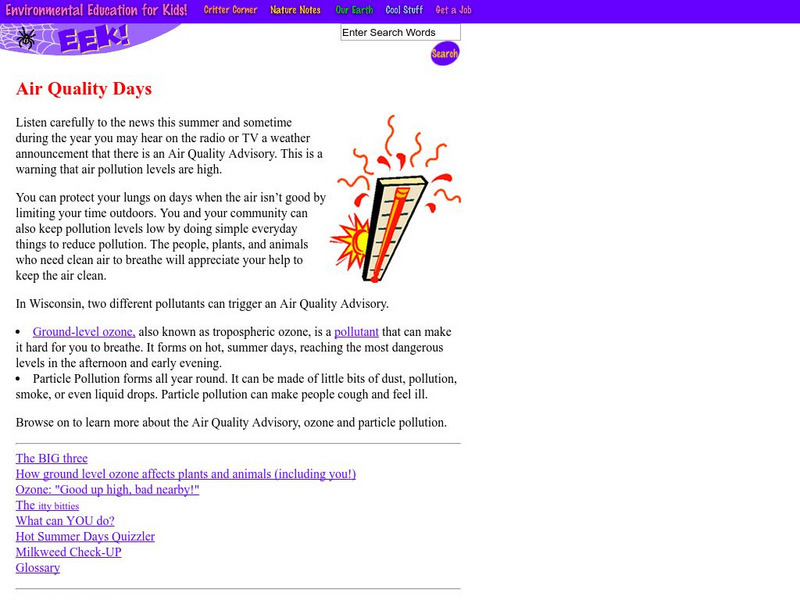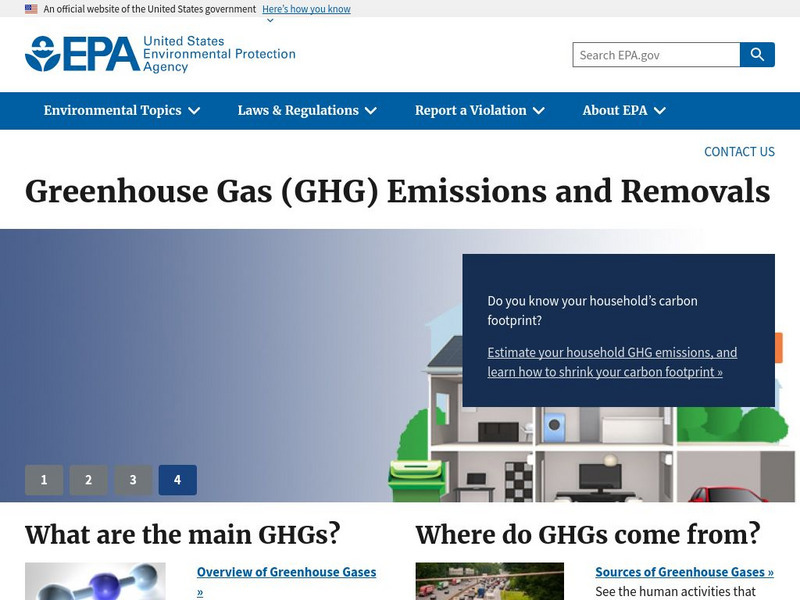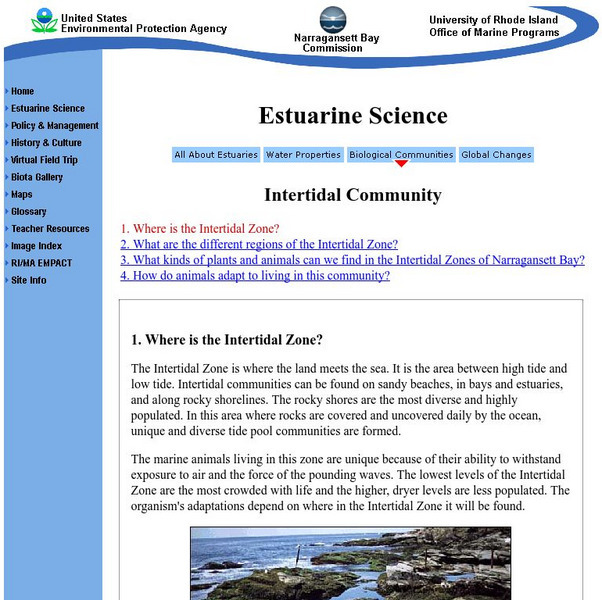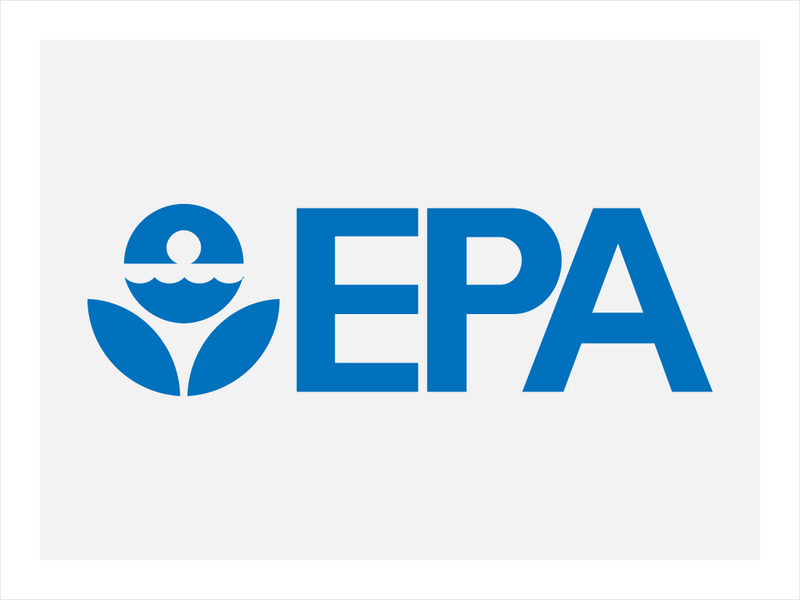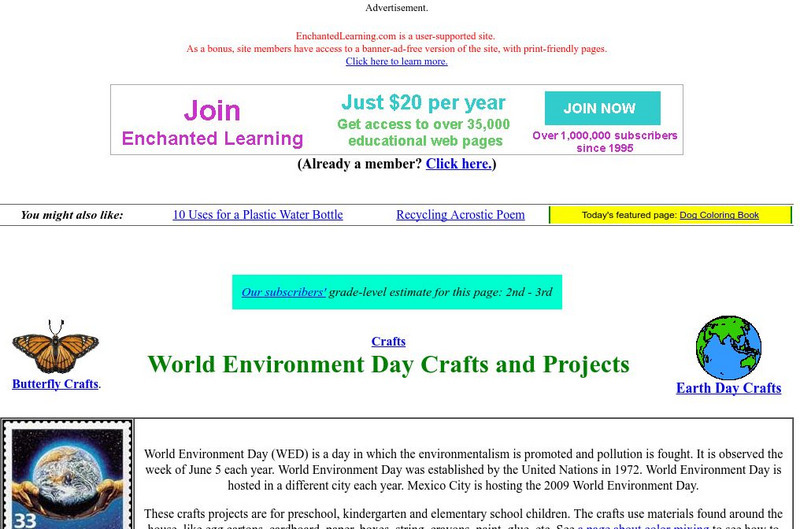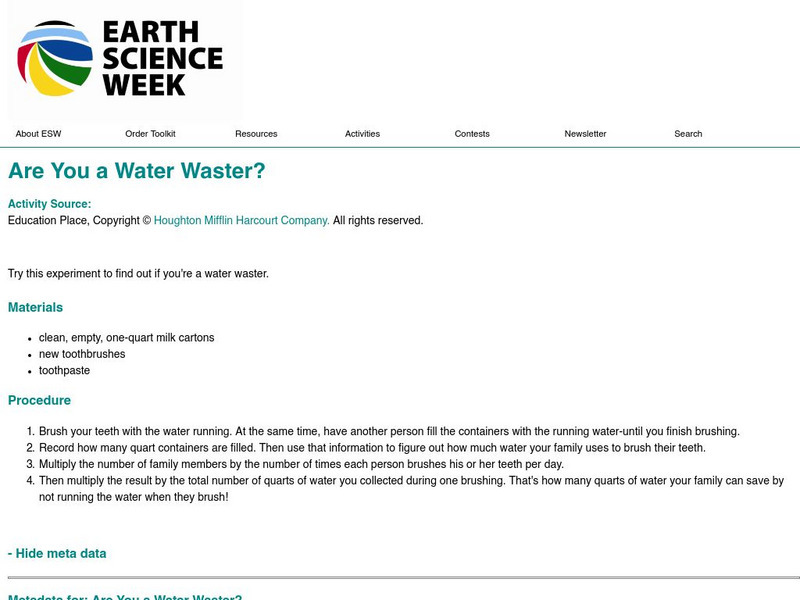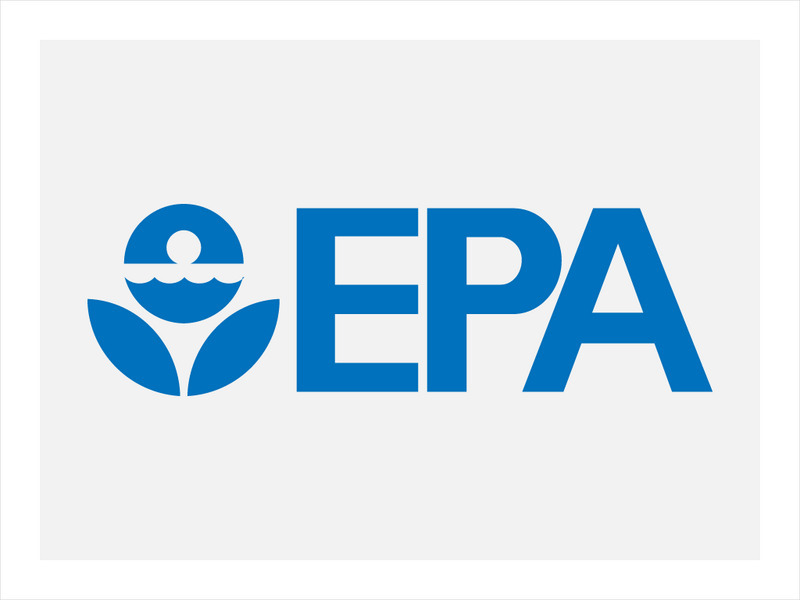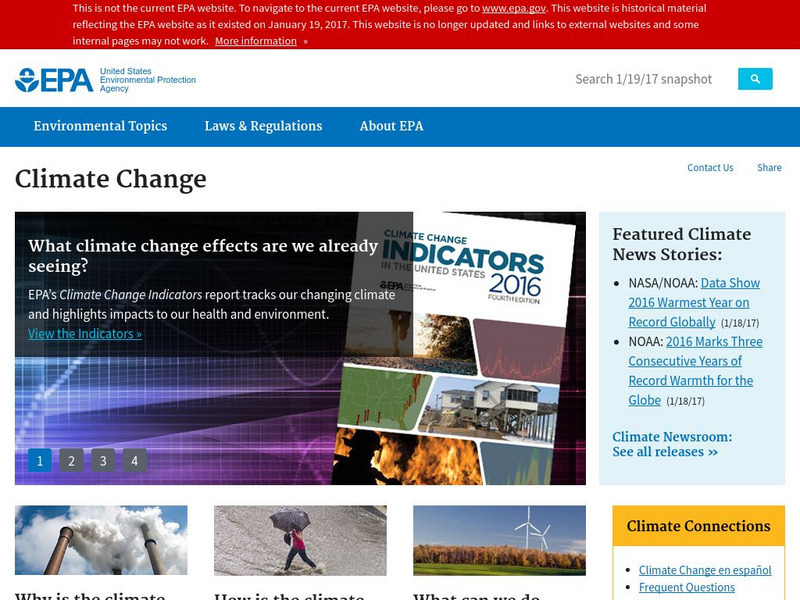Other
Pennsylvania Department of Environmental Protection: Just for Kids: Energy
Where does energy come from? What are non-renewable energy sources? How can we conserve energy? Learn the answers to these questions and more.
Other
Toronto Zoo: Adopt a Pond Wetland Conservation Programme
This is a large website from the Toronto Zoo with information on environmental conservation. There are explanations about habitats and species, and teacher resources for a variety of grade levels and subjects.
US Environmental Protection Agency
Epa: Learning and Teaching About the Environment
The United States Environmental Protection Agency provides activities, tips, and lessons for students of all ages regarding the environment.
Other
Wilderness Awareness School
This is the homepage of the Wilderness Awareness School, an organization dedicated to providing environmental education to children.
Environmental Education for Kids
Eek!: Environmental Careers: A Tale of Two Wardens
Take a peek at a day in the life of two Wisconsin wardens, a Conservation Warden and an Environmental Warden. You can also spend time learning tools of the trade in a warden technology video.
The Franklin Institute
The Franklin Institute Online: Slick Sea Spills
Use this site to promote environmental awareness in your classroom with this lesson on the effects of oil spills on water habitats.
Environmental Education for Kids
Eek!: Hot Summer Days Ozone Action
Easy to read and understand site from Environmental Education for Kids. Good and bad ozone explained and illustrated. Complete with glossary and Quizzler at the end.
National Institutes of Health
National Institute of Environmental Health Sciences: Atmosphere & Health
Find out how the atmosphere, climate, and the greenhouse effect are related. While the atmoshere can protect us, it can also be harmful to our health.
National Institutes of Health
National Institute of Environmental Health Sciences: Let's Talk About Water
Discover why water is so important, especially clean water. Find out where water comes from and how we can make it safe to drink and free from pollution.
University of Wisconsin
University of Wisconsin: Give Water a Hand
National watershed education program engaging young people in environmental service projects. Download their free Action Guide and Leader Guidebook to get your class started on a community service project to help the environment. Action...
PBS
Pbs Learning Media: Environmental Public Health: Protect Your Health and Environment
Learners learn what they can do to protect themselves from health hazards in their environment. They learn about potential hazards, how these can affect their health, and what they can do to minimize their exposure.
Other
Mother Nature Network: Earth Day: An Animated Tribute
Animated review of environmental legislation and events, produced as a commemoration, in 2010, on the forty-year anniversary of the first Earth Day. Includes a timeline of events. [4:40]
US Environmental Protection Agency
Epa: Greenhouse Gas (Ghg) Emissions
Earth's atmosphere contains greenhouse gases. Find out what these gases are and where they come from. Also link to other information about how greenhouse gases contribute to climate change.
Environmental Education for Kids
Eek!: Teacher Resources: My Ton of Trash (Lesson Plan)
Here you can find an engaging lesson plan on the trash each individual generates over time. Students will learn how trash is generated, how trash is disposed of, and possible ways to reduce the amount of trash.
Other
University of Rhode Island: Estuarine Science: Intertidal Zones
Learn what an intertidal zone is and where these areas exist on Earth.
US Environmental Protection Agency
Epa: Create a New Climate for Action
The wealth of information and tools available on this site will assist students and teachers to develop and promote active awareness of the impact human beings have on the environment. Resources are provided to guide them in how to lead...
Enchanted Learning
Enchanted Learning: World Environment Day Activities
This resource provides a collection of creative activities for the celebration of World Environment Day, June 5th.
PBS
Pbs Learning Media: The Lowdown: Brief History of the First Earth Day and What We Can Learn From Its Success Lesson Plan
Earth Day grew out of the environmental movement in the late 1960s in response to a series of environmental disasters that took lives, marred natural beauty and threatened animal species. An estimated 20 million Americans participated in...
American Geosciences Institute
American Geosciences Institute: Earth Science Week: Are You a Water Waster?
In this activity, students monitor how much water is used if the water is left running while they brush their teeth. They use that information to calculate how much the whole family would use. They learn how much water can be conserved...
Alabama Learning Exchange
Alex: Team Up to Clean Up
In this activity from "The Friends of Auntie Litter", (www.auntielitter.org), natural and human-made litter will be explored. Students will also participate in a litter removal activity. This activity is one from the "Take Pride...
Other
Earth Day Canada: Eco Kids: Battery Facts
Battery Facts provides helpful information about the benefits of batteries, how they work, and the concerns over the footprint they leave on the environment when they are not properly disposed of.
US Environmental Protection Agency
Epa: Secret of Bog Creek
This site has a user guided story about a bog that has been a secret dumping ground for waste.
US Environmental Protection Agency
Epa: Learn the Issues: Learn About Land and Cleanup
This site provides real-world issues as well as the scientific research and technology used to support the EPA's mission to protect human health and safeguard the natural environment.
US Environmental Protection Agency
Epa: Climate Change
Learn all the facts and figures about climate change.
